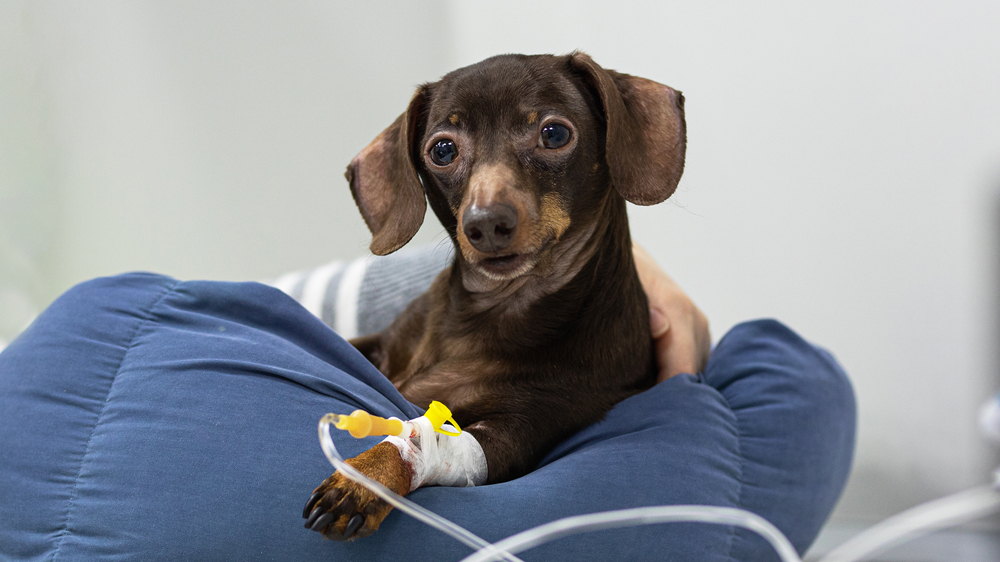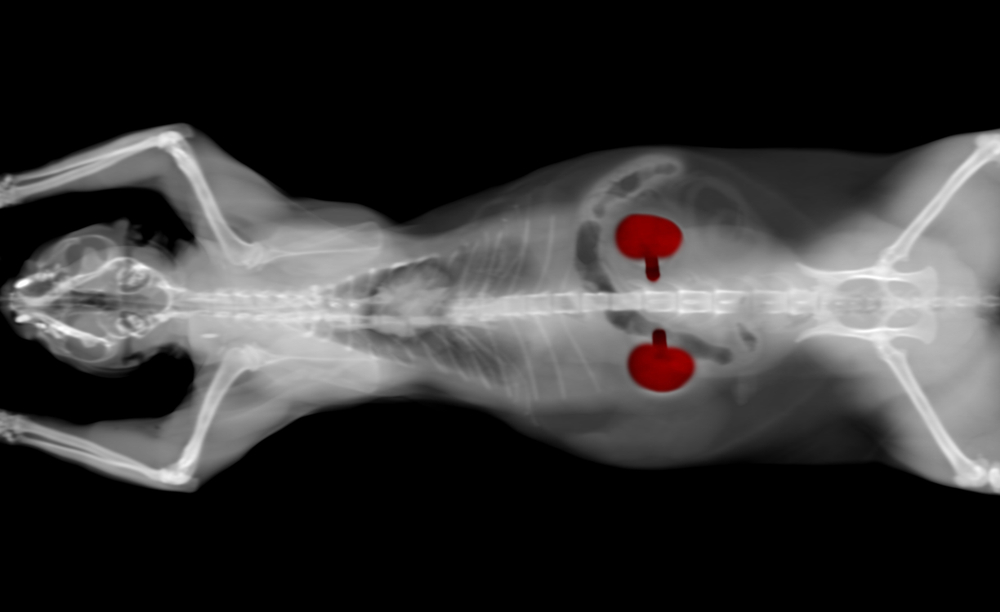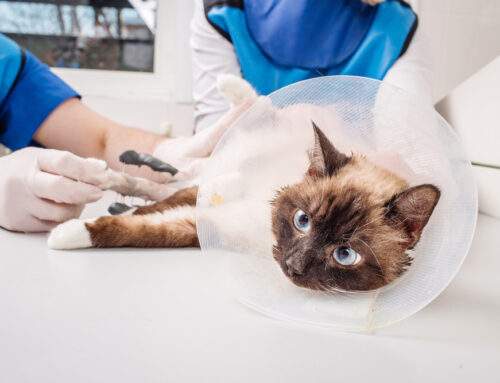The kidneys are vital pet organs that not only control hydration level, but also play a part in electrolyte and mineral concentrations, red blood cell production, blood pressure, protein metabolism, waste removal, and more. Kidney function changes are commonly more prevalent with age, affecting more cats than dogs—30% to 50% of cats older than 15 will develop chronic kidney disease (CKD).
By the time kidney disease is diagnosed, most pets have irreversibly lost the majority of their kidney function and their quality of life has declined significantly. The Greenfield Veterinary Clinic team shares how early detection can change the disease course and provide a longer, healthier life for pets with CKD.
Chronic kidney disease signs in pets
The kidneys act as a blood filter in your pet’s body to regulate fluid balance, retain beneficial blood substances, and filter out urinary waste products. They also produce and regulate certain hormones that can further affect fluid balance, blood pressure, and red blood cell production. CKD is the progressive loss of kidney cells and filter function, commonly resulting from infection, inflammation, hereditary disease, genetic factors, or unknown aging causes.
CKD does not produce noticeable signs in pets until two-thirds to three-quarters of the kidney cells are lost, and body functions are affected. Signs may include:
- Increased urination and thirst
- Nausea, vomiting, or decreased appetite
- Weight loss
- Bad breath
- High blood pressure
- Eye changes associated with high blood pressure
The problem with traditional pet chronic kidney disease diagnostics
CKD can be detected on routine blood and urine tests, but only when the disease has reached an advanced stage. Around the time clinical signs show up, so do changes in blood waste products (i.e., blood urea nitrogen [BUN], creatinine). Failure to concentrate the urine or protein loss into the urine are also common laboratory kidney disease indicators, but by this time, so much damage has occurred that treatments will not significantly impact the disease course.
The problem is that early stage disease is often missed on traditional lab work. Creatinine, which is most sensitive for detecting CKD, will usually rise slowly over time but may remain inside the laboratory’s “normal” range. Creatinine and BUN can also be affected by diet, weight changes, muscle mass, and hydration, further complicating blood test interpretation. Visiting your veterinarian at least annually for blood and urine tests can make early CKD detection significantly easier, because serial results detect smaller changes over time.
New diagnostics for early pet chronic kidney disease detection
Symmetric dimethylarginine (SDMA) is a new blood screening test that helps to detect kidney function changes earlier in the disease course, when treatments can help protect remaining kidney cells and function and significantly slow disease progression. This test more closely correlates with kidney filtration rates than BUN or creatinine, and is not affected by weight, muscle mass, or other systemic health factors. SDMA values can rise months to years before any other blood or urine changes are detectable, making this a valuable and revolutionary screening tool for CKD in pets. Our standard send-out blood profiles all include the SDMA test.
An elevated SDMA level that is repeatable usually indicates early CKD stages one or two, when starting treatments to protect the kidneys can allow pets to live for many years following their diagnosis, compared with a few weeks or months after a late-stage diagnosis.
Pet chronic kidney disease treatment

Early CKD treatment involves a special diet that balances minerals, protein, and electrolytes to reduce the kidneys’ workload. Medications to treat high blood pressure and urine protein loss serve to protect kidney cells, stabilize weight, and improve how pets feel. If CKD progresses to a later stage, daily at-home subcutaneous fluids, dietary supplements, and anti-nausea medications are often added. Pets with severe CKD may require hospitalization or feeding tube placement if they cannot maintain adequate nutrition or hydration on their own.
CKD treatments cannot restore lost kidney cells, but can help to maximize function, protect remaining cells, improve quality of life, and prevent secondary health problems. The best way to detect early CKD is to schedule an annual wellness visit with the Greenfield Veterinary Clinic team to monitor your pet’s SDMA and other blood and urine components. Contact us to schedule your pet’s next wellness visit, or if you have any questions about CKD in pets.







Leave A Comment